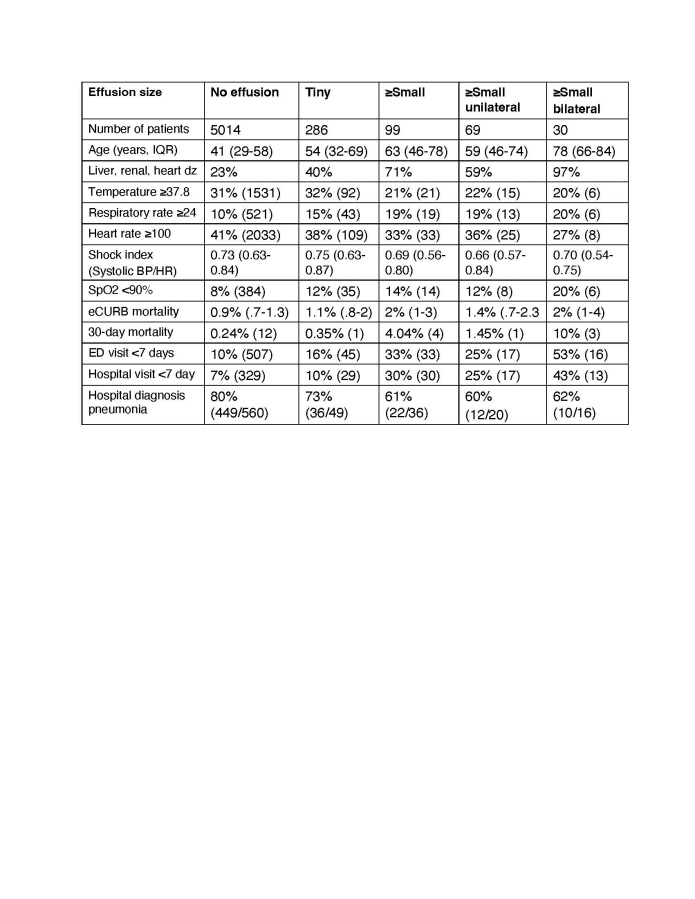Abstract
Introduction Parapneumonic pleural effusions (PPE) help determine disease severity and treatment for pneumonia patients.
Aims Describe incidence and clinical outcomes of PPE in urgent care clinic (UCC) pneumonia patients.
Methods We studied 5399 patients 2019-2020 ?12 years old with pneumonia ICD-10 codes and radiographic pneumonia in 28 Intermountain Health (USA) UCCs. Study authors categorized chest radiographs performed in UCC (all upright PA/lateral images) from radiologist reports into 1) no radiographic effusion 2) tiny effusions 3) ?small effusions with secondary image review to downgrade non-significant effusions to ?tiny?.
Results UCC pneumonia patients infrequently had PPE but experienced more emergency department visits, hospitalizations, and mortality than patients without effusions. PPE patients admitted to the hospital often received diagnoses other than pneumonia. Bilateral effusions are associated with older age and underlying liver, renal, and heart disease.
Conclusions UCC pneumonia patients with pleural effusions (especially bilateral) experience worse clinical outcomes. Imprecise radiologist interpretations of effusion size complicates clinician decision making regarding site of care.
